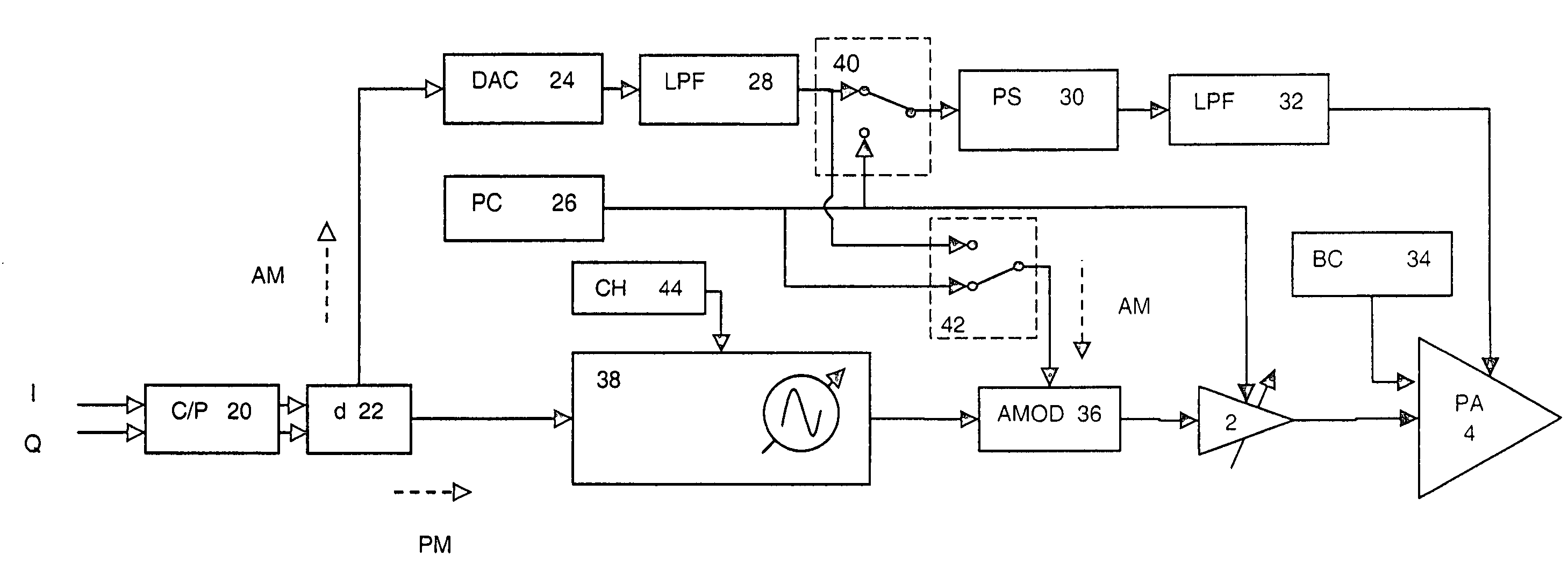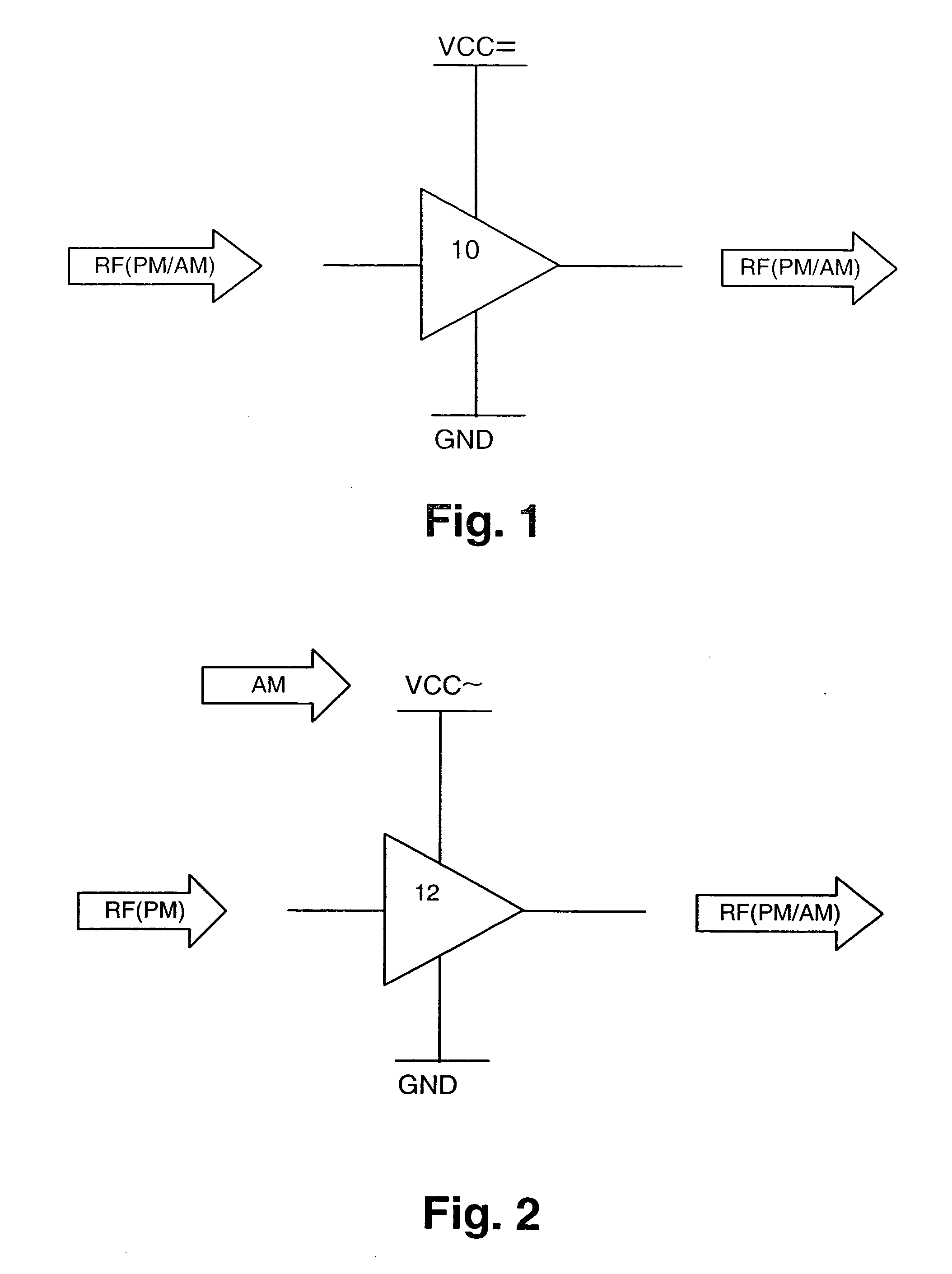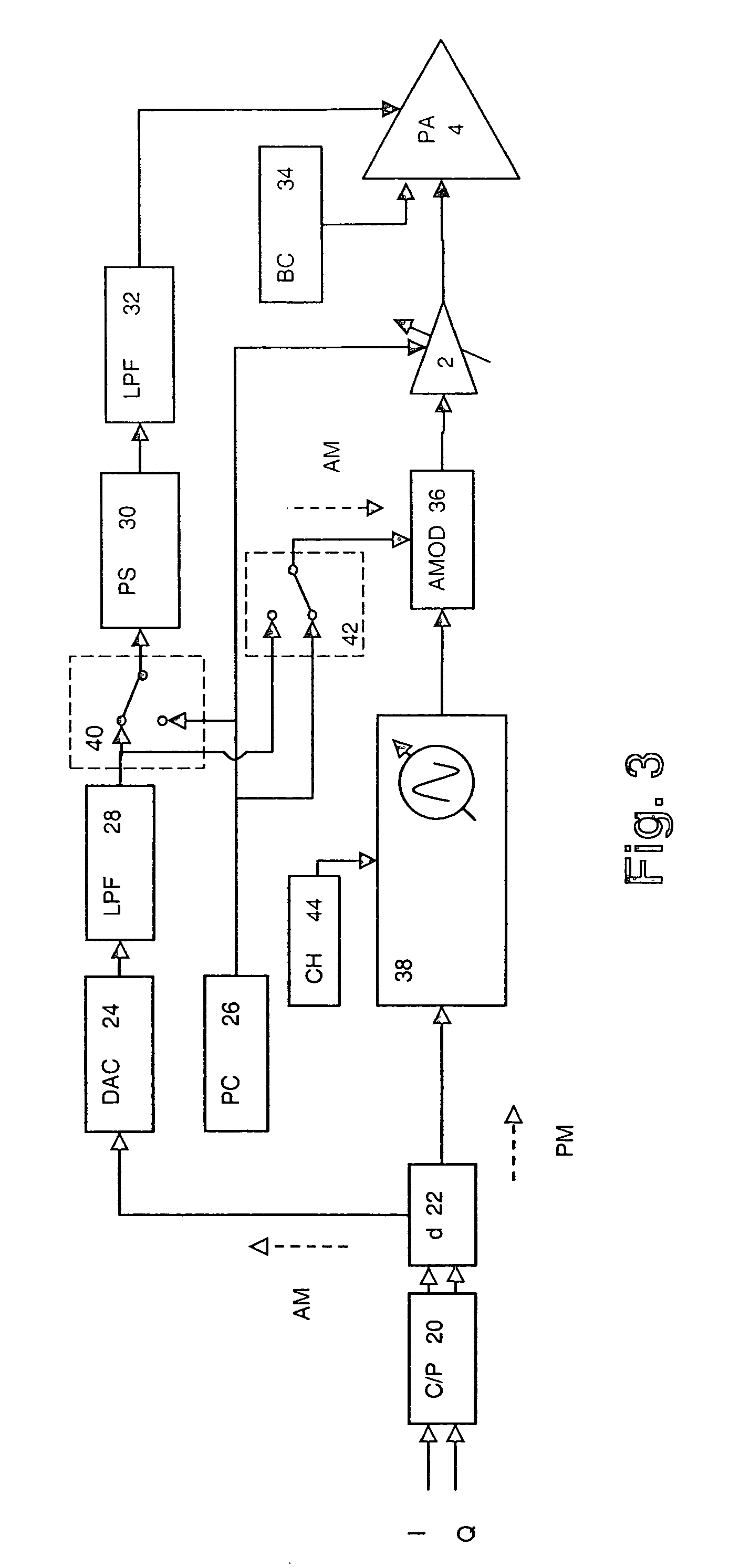Reconfigurable transmitter
a transmission system and reconfigurable technology, applied in the field of reconfigurable transmitters, can solve the problems of device saturation or cut-off, the highest power consumption of any single part of the transmitter, and the least efficient class of power amplifiers, so as to achieve flexible use and high efficiency of transmission.
- Summary
- Abstract
- Description
- Claims
- Application Information
AI Technical Summary
Benefits of technology
Problems solved by technology
Method used
Image
Examples
Embodiment Construction
[0038] The embodiment of the present invention will now be described in connection with a reconfigurable polar transmitter as shown in FIGS. 3 and 4 to be used in a cellular radio system. As an example, reconfigurable polar transmitter can be part of a mobile terminal device, such as a mobile phone or mobile computer terminal, or a base station device. The circuitry shown in FIGS. 3 and 4 can be integrated as a single chip or a chip set to be assembled in at least one of the above mentioned mobile terminal device or base station device.
[0039] According to the embodiment, the polar transmitter can be changed between switched-mode operation (switched operation mode) and a linear-mode operation (linear operation mode) as desired, depending on which mode of operation best meets the needs of the radio system in use.
[0040] When operating in switched-mode as shown in FIG. 3, the power supply 30 of a power amplifier 4 is amplitude modulated and the input of the power amplifier 4 is suppli...
PUM
 Login to View More
Login to View More Abstract
Description
Claims
Application Information
 Login to View More
Login to View More - R&D
- Intellectual Property
- Life Sciences
- Materials
- Tech Scout
- Unparalleled Data Quality
- Higher Quality Content
- 60% Fewer Hallucinations
Browse by: Latest US Patents, China's latest patents, Technical Efficacy Thesaurus, Application Domain, Technology Topic, Popular Technical Reports.
© 2025 PatSnap. All rights reserved.Legal|Privacy policy|Modern Slavery Act Transparency Statement|Sitemap|About US| Contact US: help@patsnap.com



